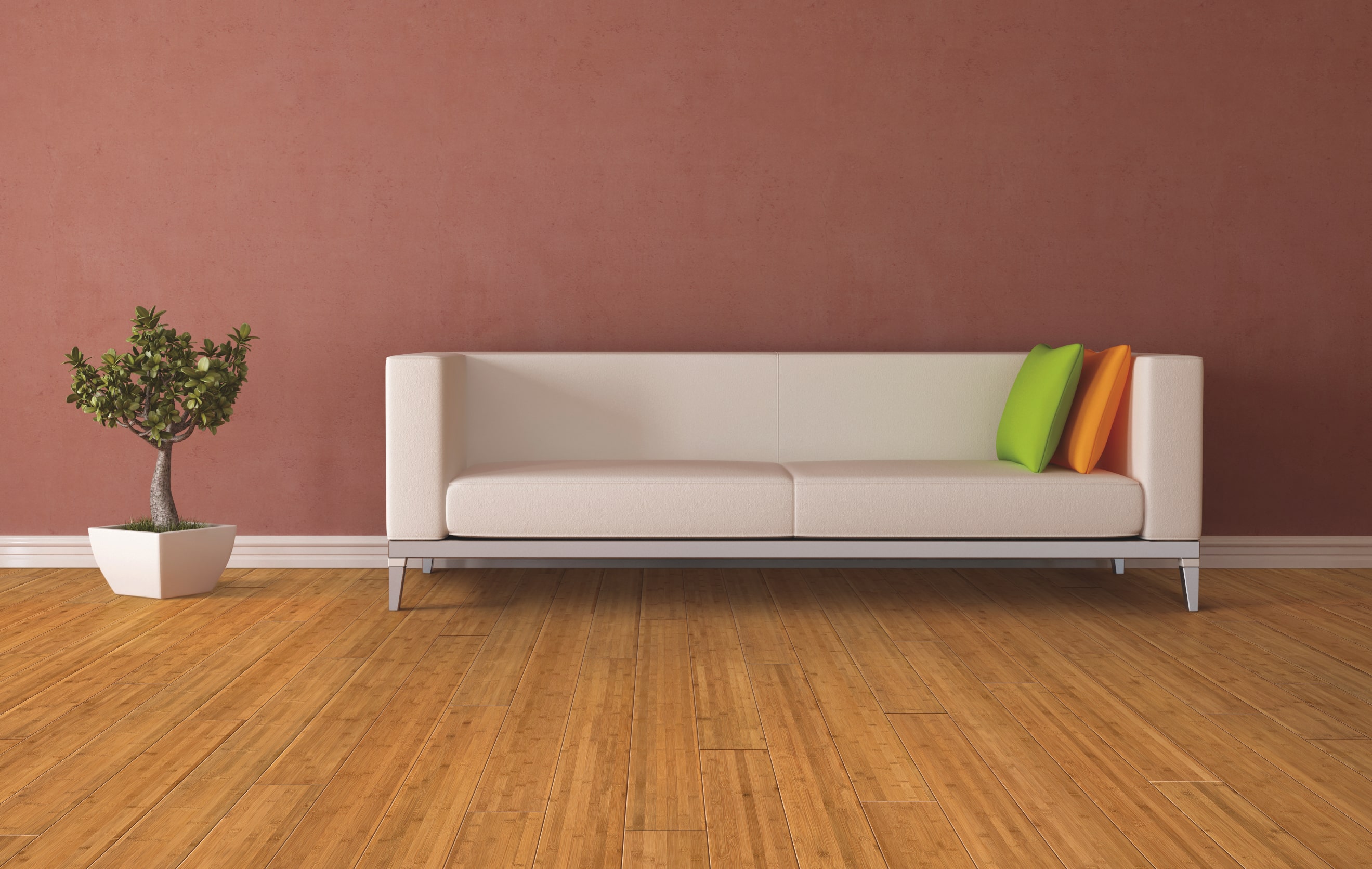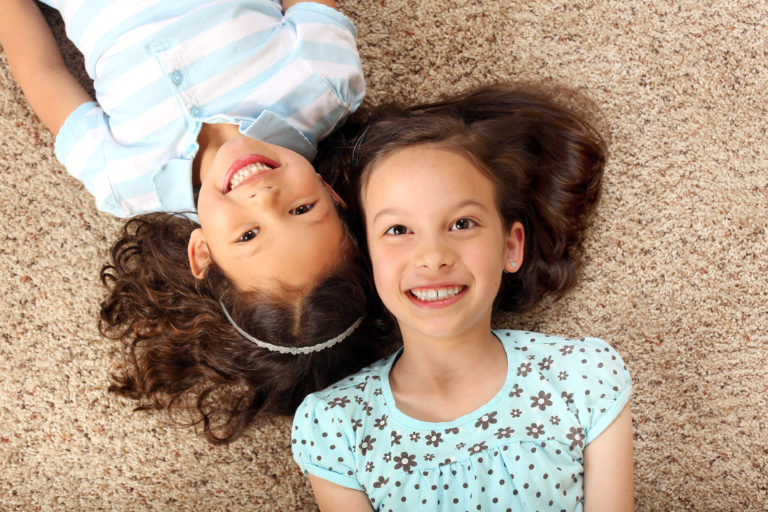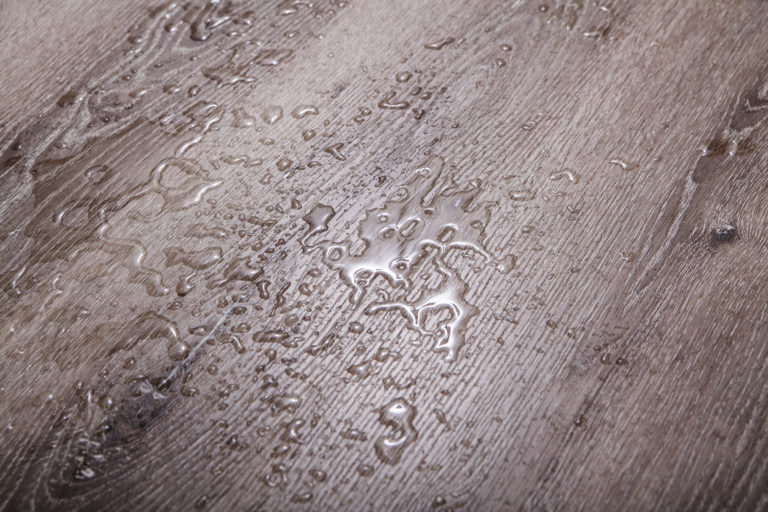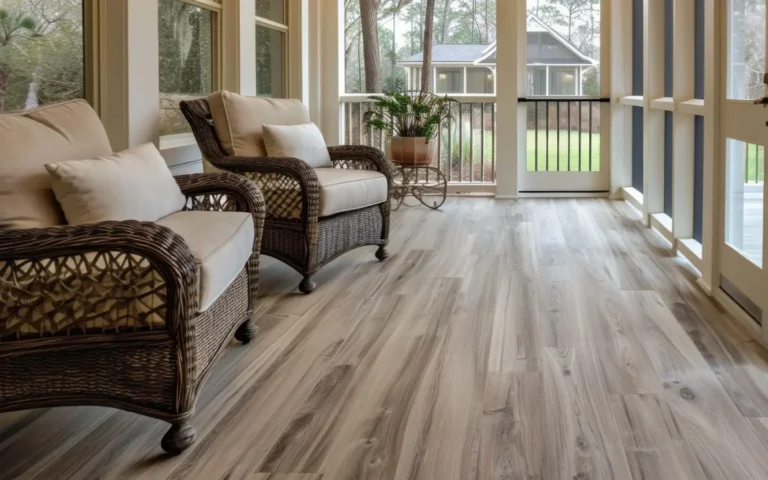Bamboo flooring is pretty interesting. It has a lot in common with hardwood flooring, although it’s technically made from grass. It offers some unique benefits, and it’s also thought of as one of the more sustainable flooring options out there.
If you’re looking for a durable, versatile, natural floor that, when responsibly harvested and manufactured, has some strong green bona fides, you might want to consider bamboo. Here’s what you need to know.
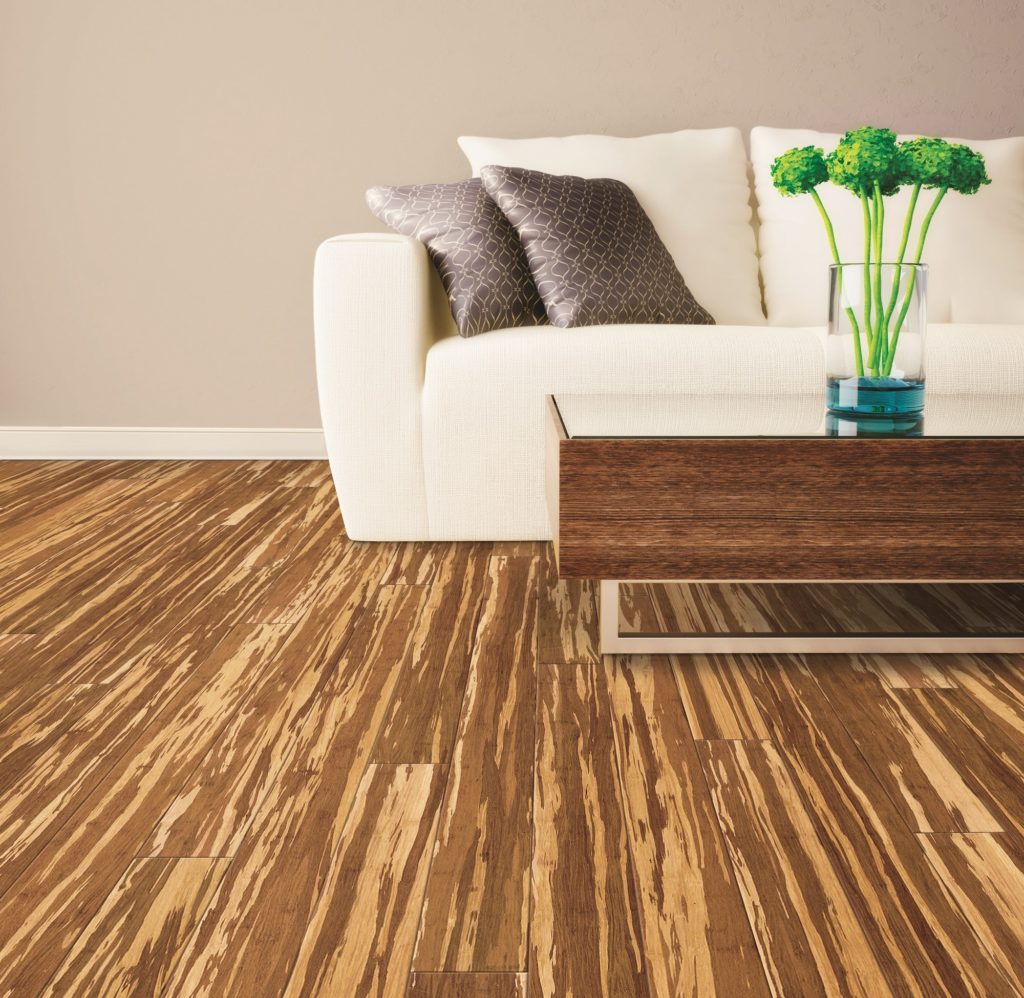
What is it?
Bamboo floors are made from bamboo grass. It’s similar to hardwood, in that it’s made from natural materials and usually comes in plank format in either a solid or engineered construction. It looks similar to hardwood, and like hardwood, can be stained to achieve a variety of different aesthetics.
There are three different styles of bamboo flooring – horizontal, vertical, and strand-woven.
If you have a preconceived idea of what bamboo flooring looks like, you’re probably picturing horizontal bamboo. It shows a prominent grain pattern with a knotty visual, giving it a similar look to what bamboo looks like in its natural form. Vertical bamboo, on the other hand, offers a more uniform, streamlined look.
The third option, strand woven bamboo, is the hardest (and often most expensive) kind of bamboo. The strands are interlocked, making it twice as hard as oak flooring.
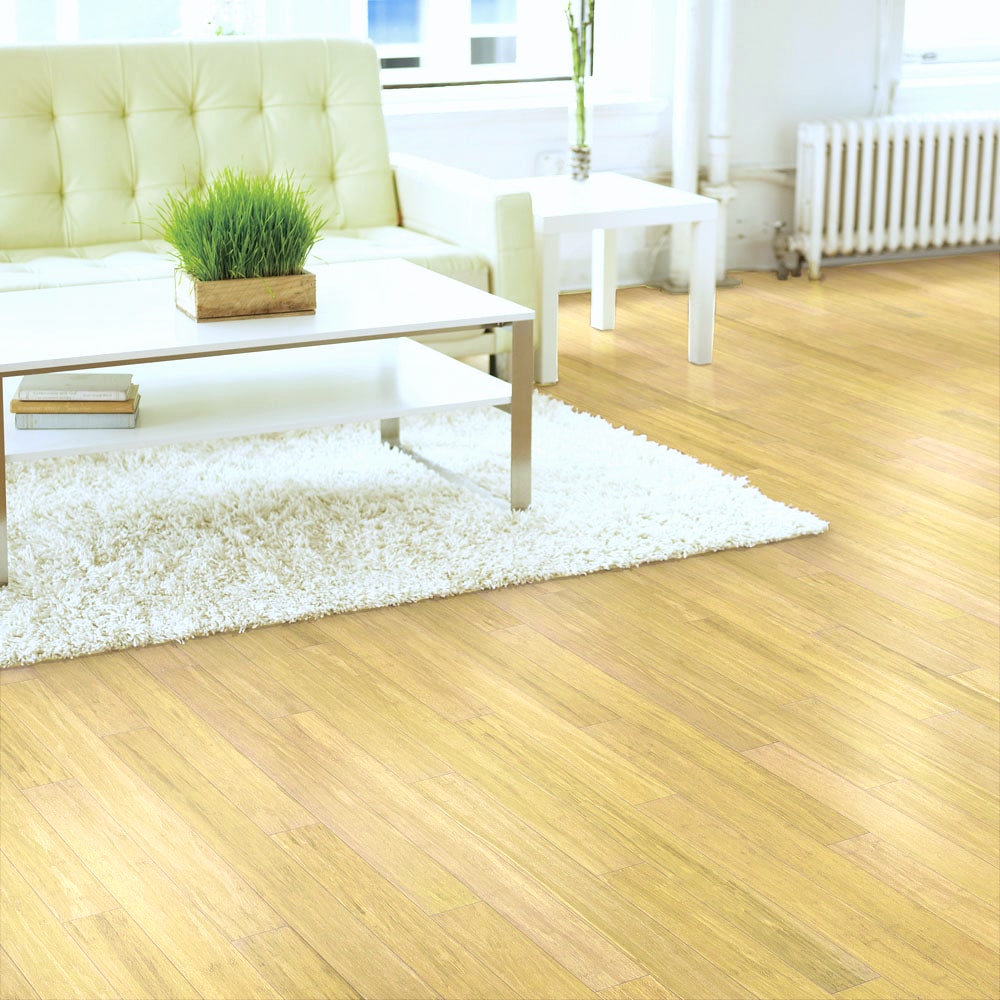
Best Brands of 2024
How durable is it?
Bamboo flooring is often touted for its durability, but that can vary depending on the manufacturing process. Carbonization, which is where bamboo is subjected to high levels of heat and pressure in order to make it darker, decreases its durability. Uncarbonized horizontal or vertical bamboo is about as durable as oak, and strand-woven bamboo can be twice as hard as oak flooring.
Depending on the planks’ format (solid or engineered), bamboo flooring can also be refinished. Solid planks can be refinished several times throughout the floor’s lifespan, while engineered planks can be refinished a couple of times, depending on the veneer’s thickness.
While bamboo flooring is pretty hard, it can be susceptible to scratching. If scuffs or scratches from pet claws, dirt, furniture, or high heels are a concern, opt for a premium product. Always take steps to protect your floors. Develop a regular maintenance routine, use protectors on all furniture and heavy appliances, and consider using area rugs or runners in high-traffic areas.
While bamboo tends to be more moisture-resistant than some traditional hardwoods, excess moisture and humidity can cause shrinkage, expansion, and warping. It’s still a natural product, after all! If you live in an extremely humid climate, or if you’re redoing your bathroom floors, bamboo might not be the best choice for you.
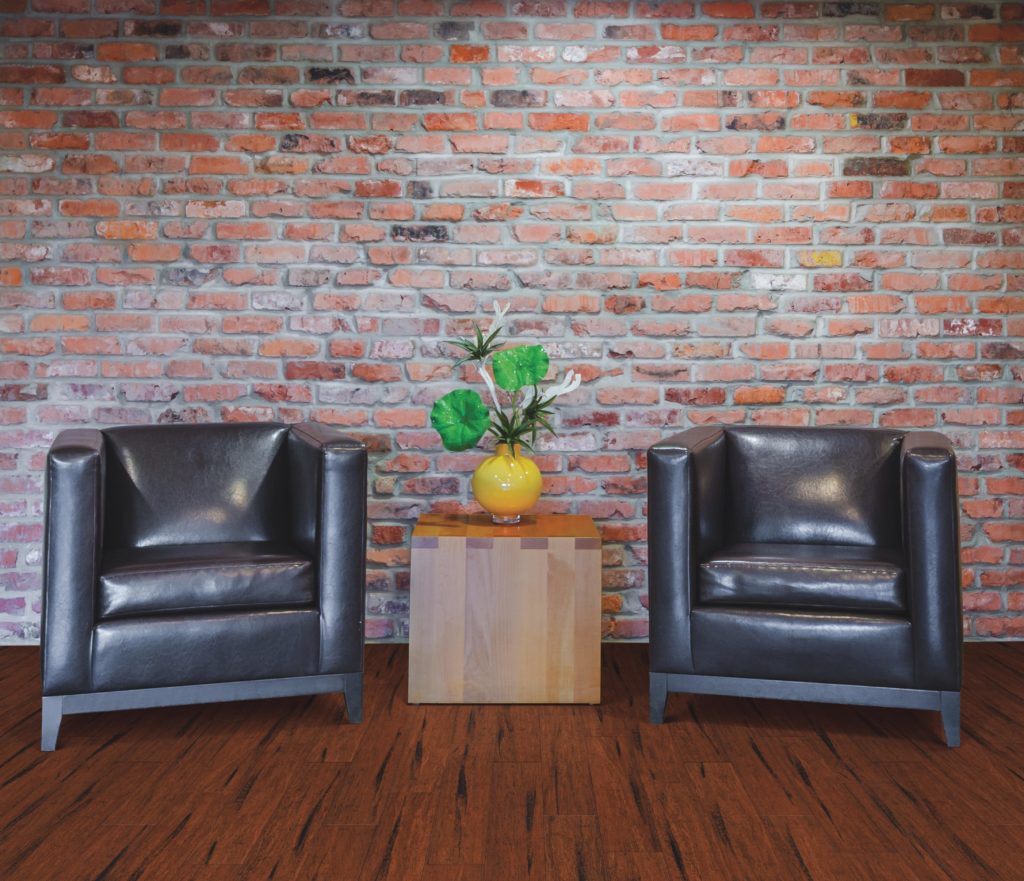
How sustainable is it?
From a harvesting standpoint, bamboo is a very sustainable product. Bamboo grass only takes three to five years to grow to maturity. Meanwhile, trees used to make traditional hardwood can take decades to reach maturity. So, it’s a rapidly renewable resource.
However, most bamboo is manufactured overseas, which means transporting it can be expensive, and shipping contributes to its carbon footprint. There has also been evidence showing that some bamboo manufacturers use formaldehyde and adhesives that emit volatile organic compounds (VOCs). Opt for bamboo products with a Forest Stewardship Council certificate if sustainable, eco-friendly flooring is a priority.
About The Author

Lauren Moore
April 3, 2019
Proud flooring aficionado and office dog mom, "Flauren" has been a professional writer and editor for more than a decade (though she still maintains her magnum opus was "The Day it Snowed Slurpees," written at the age of 6).
